Multiband compression is a pivotal technique in modern music production.
It offers unparalleled control over your track’s dynamic range of different frequency bands.
Multiband compression can help you sculpt your audio with precision, ensuring each element of your mix shines through.
As well as enhancing individual tracks, multiband compression is instrumental in mastering 一 allowing you to polish the overall sound of your production to a professional standard.
In today’s article, we’ll break down:
- Basics of multiband compression ✓
- Threshold and gain reduction techniques ✓
- Role of frequency bands in mixing ✓
- Single-band vs. multiband compressors ✓
- Using multiband compression on the drum bus ✓
- Sidechain compression with multiband compressors ✓
- Gain reduction and makeup gain mastery ✓
- Selecting multiband compressor plugins ✓
- Much more ✓
By the end of this article, you’ll possess all the essentials of multiband compression, enabling you to balance and enhance your mixes effectively. P
lus, you’ll know how to apply these techniques across different genres, bringing a professional touch to your music production.
Whether you’re refining the low-end frequencies, managing the dynamics of a vocal track, or selecting the perfect plugin for your needs, we’ve got you covered.
You’ll be equipped to do so confidently and skillfully like a seasoned professional.
So, let’s dive in…
Table of Contents
- What is Multiband Compression?
- The Key Components of a Multiband Compressor
- Threshold and Gain Reduction in Multiband Compression
- Frequency Bands and Their Role
- Single-Band Compressor vs. Multiband Compressor
- Practical Applications of Multiband Compression
- Navigating Different Frequency Ranges
- The Art of Gain Reduction and Makeup Gain: Breaking it Down Further
- Fine-Tuning Compression Settings
- Bonus: Refining Low-End Frequencies in Your Mix
- How To Use Multiband Compression: Final Thoughts
What is Multiband Compression?
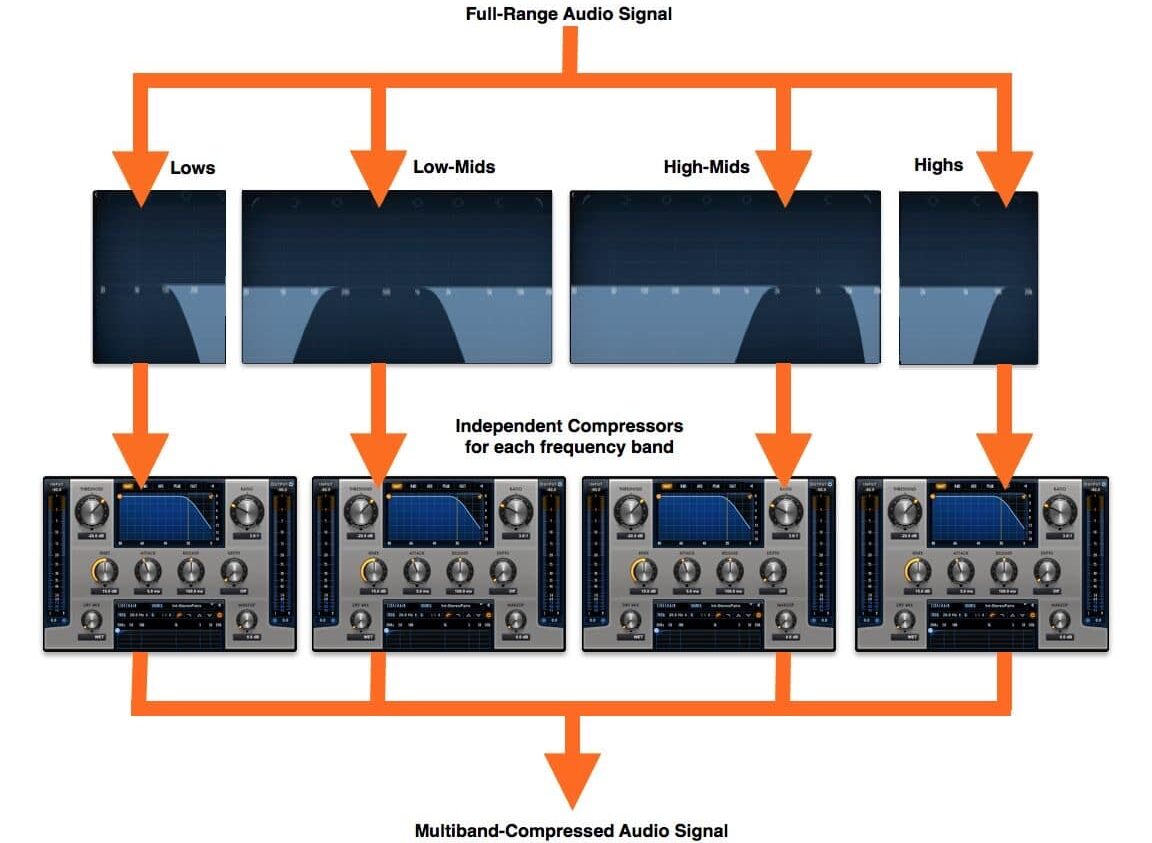
Multiband compression is an advanced tool in the music production arsenal, crucial for shaping the dynamic range of audio across different frequency bands.
Unlike a single-band compressor that applies the same compression settings across the entire frequency spectrum, a multiband compressor allows you to compress specific frequency ranges independently.
This targeted approach offers unparalleled control over the mix, enabling you to fine-tune audio without affecting the whole track.
By adjusting compression settings (and similar settings) for individual frequency bands, multiband compression enhances:
- Clarity
- Balance
- The overall sound quality
Multiband compression isn’t just about controlling the volume fluctuations of all the bands 一 it’s about sculpting the audio to enhance musical expression.
Each frequency range in a mix (be it the punchy lows of a kick drum, the warm mids of an acoustic guitar, or the crisp highs of cymbals) can be individually managed.
This precise control makes multiband compressors a favorite among music producers, especially when dealing with complex mixes where maintaining the integrity of each element is crucial.
Multiband compressors stand out in their ability to tackle impossible problems for single-band compressors.
For example, if a vocal track has harsh sibilance only in the high-frequency band, a multiband compressor can compress just this problematic range.
All without dulling the rest of the vocal.
It’s this level of detail that makes multiband compression a go-to technique for both subtle enhancements and major audio corrections in modern music production.
The Key Components of a Multiband Compressor
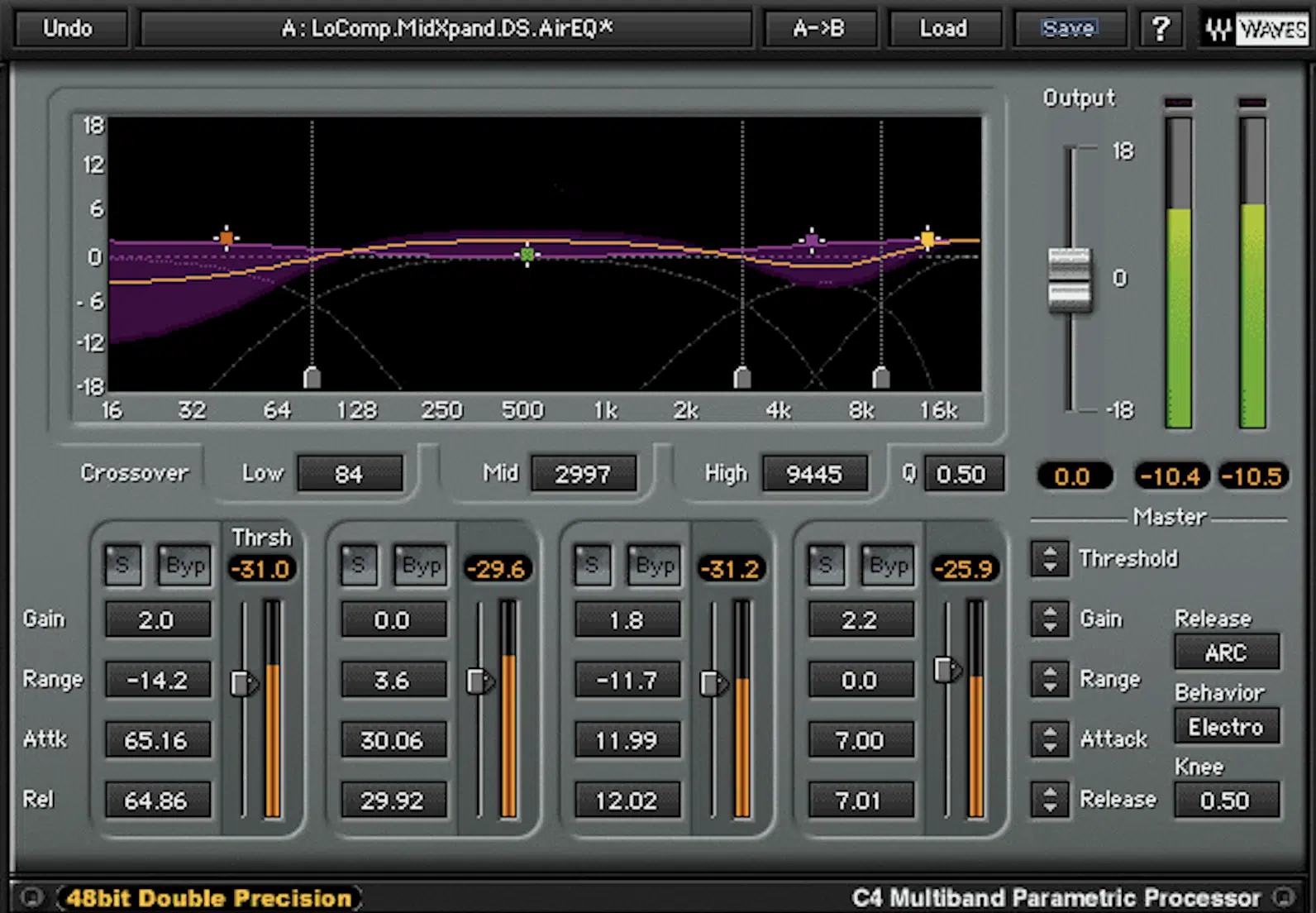
A multiband compressor is a sophisticated device with several key components, each playing a vital role in its operation.
At its core, it comprises multiple compressors working independently on different frequency bands.
The number of bands can vary, with some compressors offering up to four or more, allowing for precise control over a wide range of frequencies.
Each band in a multiband compressor can be adjusted separately, with its own settings:
- Threshold
- Ratio
- Attack
- Release
- Makeup gain
The threshold setting is critical in multiband compression, as it determines the level at which compression starts to apply.
Each band’s threshold can be set according to the needs of specific frequency ranges, providing a level of customization unparalleled by single-band compressors.
The ratio controls determine how much compression is applied once the signal crosses the threshold.
A higher ratio means more compression 一 making it essential for controlling overly dynamic frequency ranges.
Attack and release times in a multiband compressor are crucial for shaping the sound.
The attack time controls how quickly the normal compressor reacts to a signal exceeding the threshold.
The release time determines how quickly it stops compressing after the signal falls below the threshold.
These settings are key to ensuring that the compression sounds natural and preserves the track’s musicality.
Makeup gain is then used to compensate for the volume reduction caused by compression, ensuring that the output level matches the original signal level.
Threshold and Gain Reduction in Multiband Compression
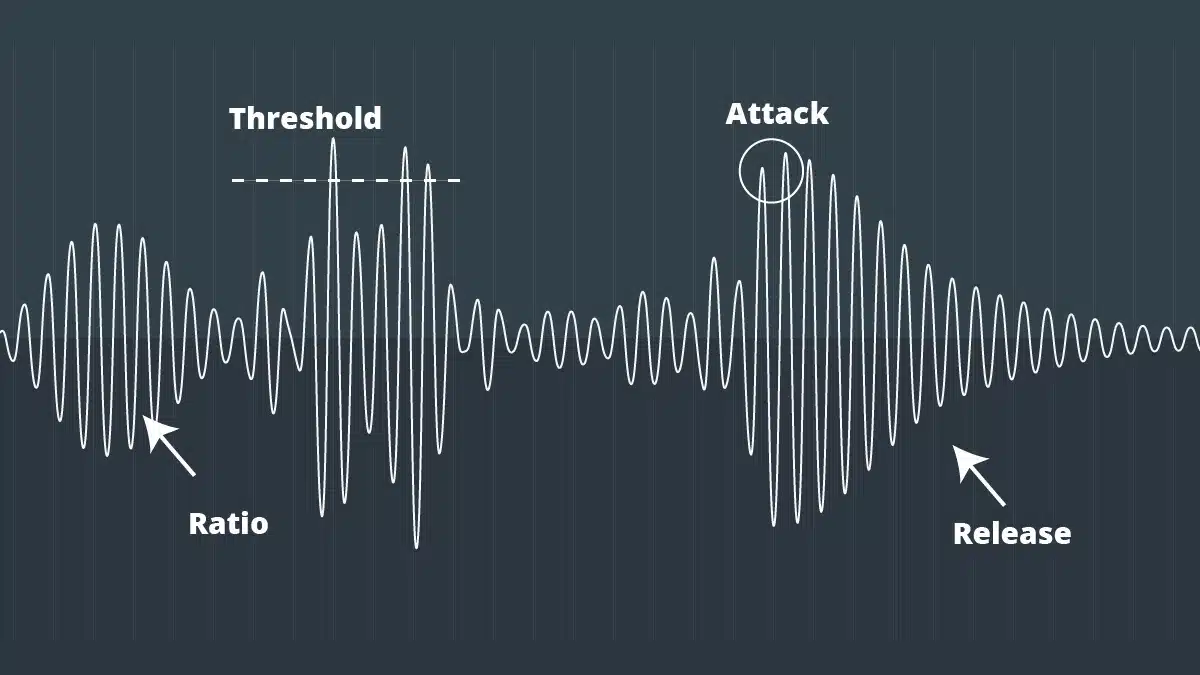
Threshold setting in multiband compression is a decisive factor in how the compression affects the audio signal.
It’s the point at which the normal compressor starts to reduce the gain of the signal when it exceeds a certain level.
Each frequency band in a multiband compressor has its threshold setting, allowing for targeted control.
This flexibility is beneficial when dealing with complex materials where different mix elements may require varying compression levels.
Gain reduction follows the threshold setting once the audio signal surpasses the set threshold.
In multiband compression, gain reduction is applied independently to each band 一 ensuring that only the specified frequency range is affected.
This selective approach to gain reduction allows music producers to compress a booming bass or a piercing hi-hat without impacting other mix elements.
It’s a level of control that’s particularly beneficial when trying to balance a mix or bring out certain elements without losing the track’s overall character.
The use of gain reduction in multiband compression also plays a vital role in dynamic range control.
Reducing the gain of louder parts of a signal within a specific frequency range helps in maintaining a consistent level, enhancing the overall sound quality.
NOTE: The key is to set the threshold and gain reduction appropriately to avoid over-compression (heavy compression), which can lead to a lifeless sound.
Frequency Bands and Their Role
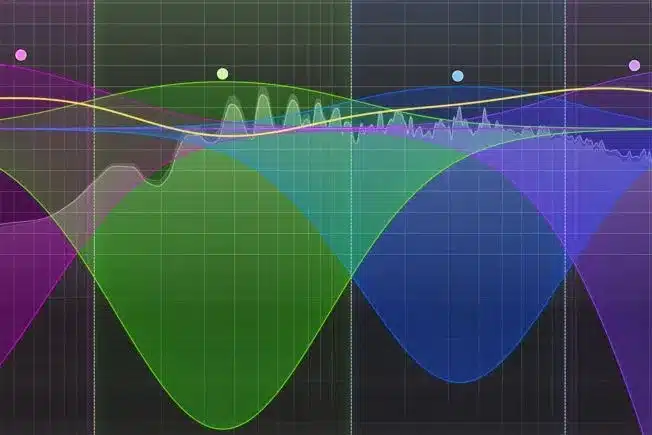
In multiband compression, understanding the role of frequency bands is crucial.
Each band represents a segment of the audio spectrum, and multiband compressors typically divide the spectrum into:
- Low bands
- Mid bands
- High bands
Some advanced models offer even more bands for finer control.
The low bands handle the bass frequencies, including elements like kick drums and bass guitars.
This band is crucial for managing the power and punch in the mix without causing muddiness or overpowering other elements.
The mid-band of a multiband compressor deals with the frequencies where most musical instruments and vocals lie.
This band is essential for controlling the body and presence of the mix.
Proper management of the mid-band can significantly enhance the clarity and balance of the vocals and main instruments.
It makes them stand out in the mix without overshadowing other components.
It’s a delicate balancing act 一 ensuring that the warmth and fullness of the mid-range frequencies are maintained while avoiding muddiness or clutter.
The high band in multiband compression focuses on the treble frequencies, which include elements like cymbals, hi-hats, and the upper harmonics of instruments.
This band is critical for adding sparkle and air to the mix, ensuring that the high-end frequencies are crisp and clear, preventing harshness or sibilance.
By adjusting the compression settings in this band, you can achieve a bright and lively sound that elevates the overall quality of the track.
PRO TIP
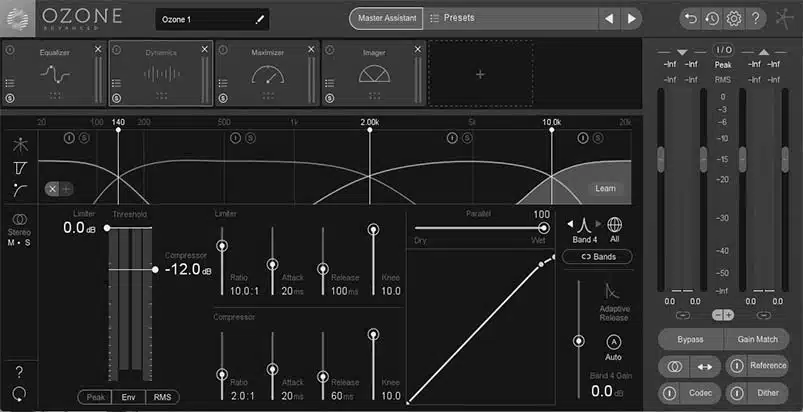
Unlike normal compression, which applies uniform settings across the entire audio signal, multiband compression allows for more nuanced adjustments thanks to crossover frequencies.
This enables different settings for each band, even if they cover the same frequency range, leading to more tailored multiband dynamics.
A crossover frequency is a specific point in the frequency spectrum where a single compressor splits the audio signal into different bands for multiband dynamics processing.
This crossover point is crucial as it determines the minimum number of distinct frequency ranges the compressor will manage.
Single-Band Compressor vs. Multiband Compressor
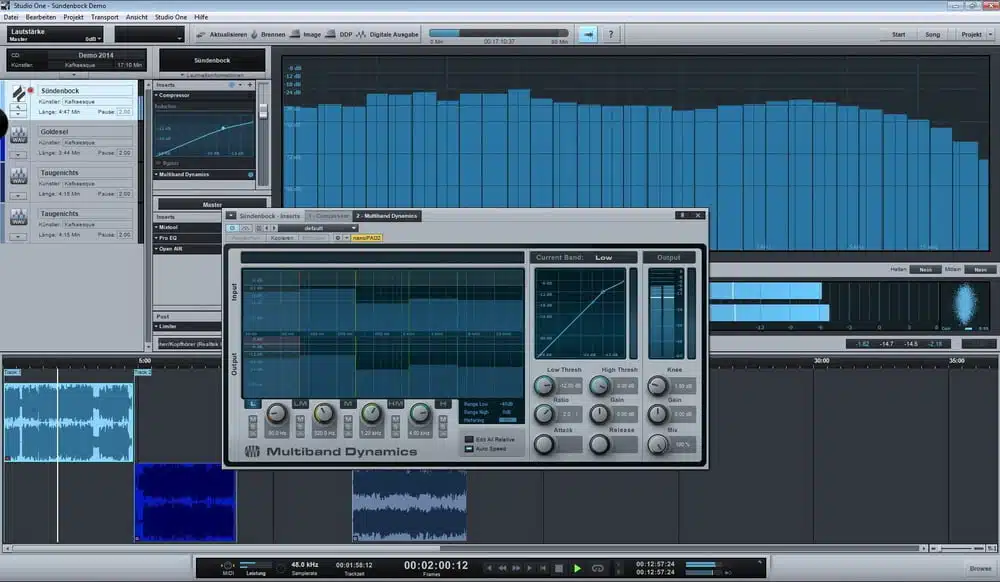
Comparing single-band and multiband compressors highlights their distinct functionalities/applications in music production.
A single-band compressor applies the same compression settings across the entire frequency spectrum of the audio signal.
This makes it simpler to use but less flexible than a multiband compressor.
Single-band compressors are effective for general dynamic control, especially when the entire signal needs uniform compression.
This includes instances like a solo vocal track or a bassline.
Multiband compressors, on the other hand, offer more refined control by allowing compression to be applied to different frequency bands independently.
This feature is particularly useful in complex mixes where different elements require distinct compression settings.
For instance, a track may have a hard-hitting bass that needs taming without affecting the crispness of the high-end frequencies.
A multiband compressor can target the low-end frequencies for compression, leaving the rest of the spectrum unaffected.
Practical Applications of Multiband Compression
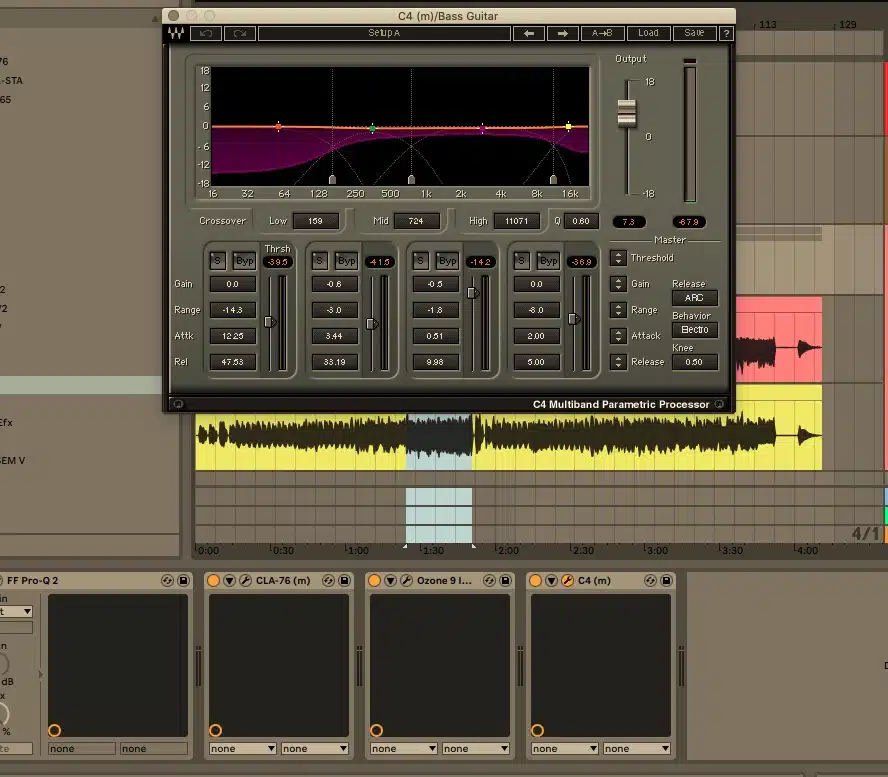
Multiband compression finds its practical applications in various stages of music production, from mixing to mastering.
In mixing, it is often used to shape individual elements of a track, like:
- Vocals
- Guitars
- Drums
It provides the ultimate control over specific frequency ranges.
This targeted approach helps enhance clarity, balance, and overall mix quality 一 allowing each element to shine without overpowering others.
In mastering, multiband compression is a powerful tool for finalizing the overall sound of a track.
It enables the mastering engineer to glue different parts of the mix together, ensuring a consistent and cohesive sound across all frequency ranges.
By applying slight compression to certain frequency bands, multiband compression helps achieve a polished, radio-ready sound.
This helps your track sound good on a wide range of playback systems.
-
Using Multiband Compression on the Drum Bus
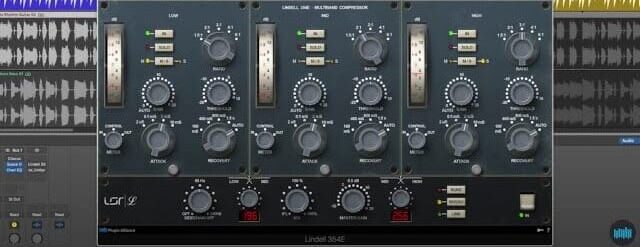
Applying multiband compression to the drum bus (not to be confused with the master bus) is a common and effective technique in music production.
Drums often cover a wide range of frequencies, from the low thump of the kick drum to the high snap of the snare and cymbals.
Multiband compression allows producers to control these diverse elements collectively yet differently.
For example, tightening up the low-end of the kick while maintaining the snap and air of the snare and cymbals can significantly enhance the overall drum mix.
When compressing the drum bus, it’s important to focus on maintaining the energy and groove of the drums.
- Over-compressing 一 Flattens the dynamics.
- Under-compressing 一 Leaves the drums sounding loose and disjointed.
A balanced approach with multiband compression can add punch and clarity, making the drums sound cohesive and powerful.
This is essential for the drive, rhythm, and melody of most music genres.
-
Multiband Compression for Dynamic Range Control
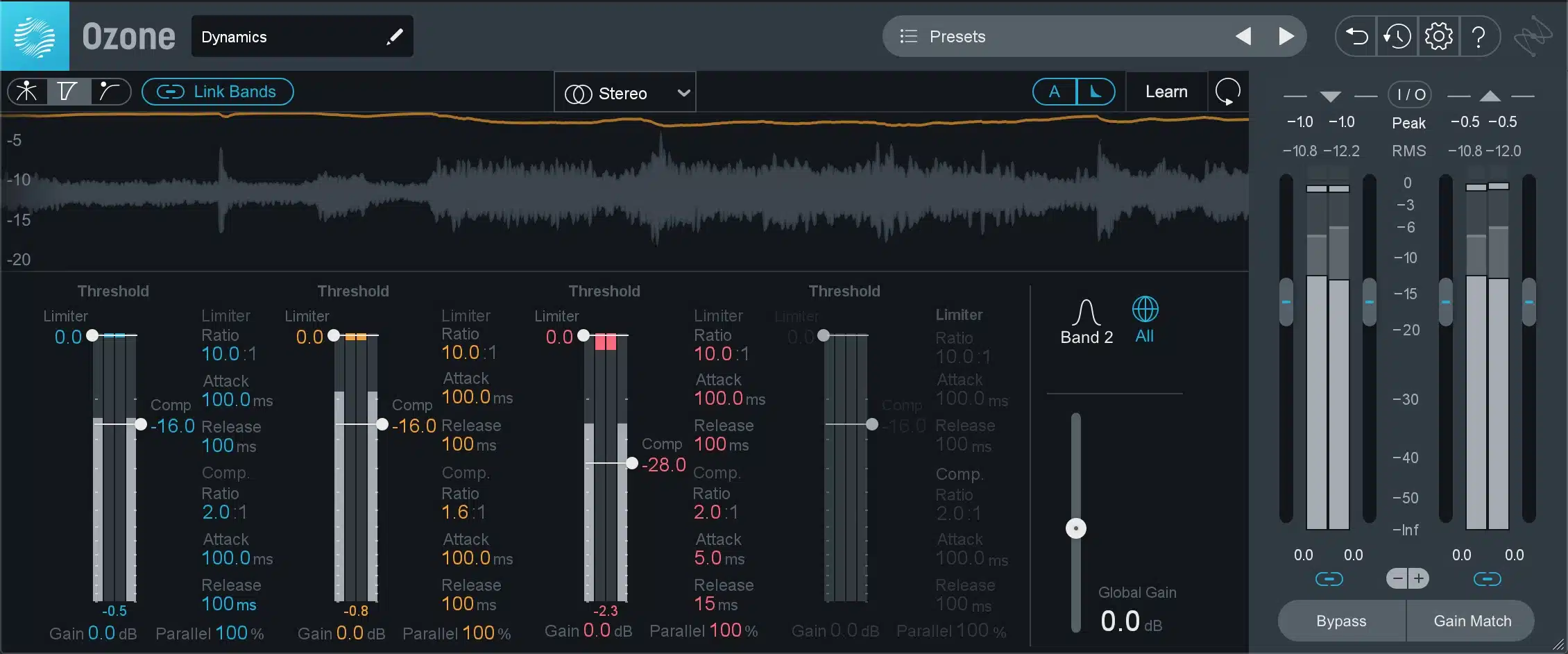
Dynamic range control is one of the most essential aspects of multiband compression.
In music production, dynamic range refers to the difference between the loudest and softest parts of an audio signal.
Managing this range is crucial for ensuring all mix elements are audible and well-balanced.
Multiband compression allows you to compress only the frequency bands that need dynamic control, leaving the rest of the frequency spectrum untouched.
How many bands you choose to use is entirely up to you.
For example, if the vocals in a track are dynamic with loud peaks and soft whispers, applying multiband compression to the mid-frequency range can help even out these variations.
All without affecting the energy and presence of the rest of the mix.
Similarly, controlling the dynamic range of the low-end can prevent the bass from overpowering other elements 一 resulting in a tighter and more balanced mix.
The key is to use multiband compression judiciously to maintain the natural feel and character of the music while achieving the desired level of dynamic control.
-
Sidechain Compression with Multiband Compressors
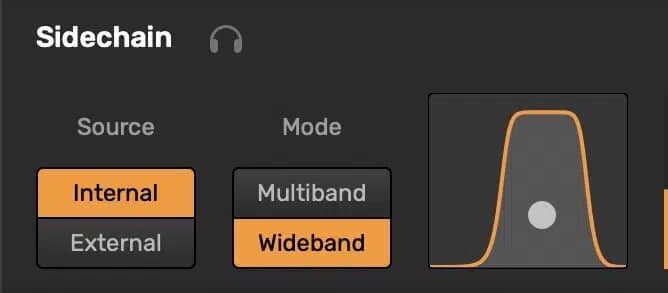
Sidechain compression using multiband compressors adds a new dimension to this popular technique.
Traditionally, sidechain compression is used to duck one element of a mix (like a bass line) in response to another (like a kick drum).
With multiband compression, this can be done more selectively, affecting only certain frequency ranges of the bass line.
This selective approach ensures that the interaction between the kick and bass is more refined 一 preventing the entire bass line from ducking unnecessarily.
This technique is vital in electronic and dance music, where the rhythmic interplay between the kick and bass is crucial.
By using multiband sidechain compression, producers can achieve a tight and punchy low-end that grooves in sync with the kick hits without losing the body and warmth of the bass.
Sidechain compression is a powerful tool for creating dynamic, engaging mixes.
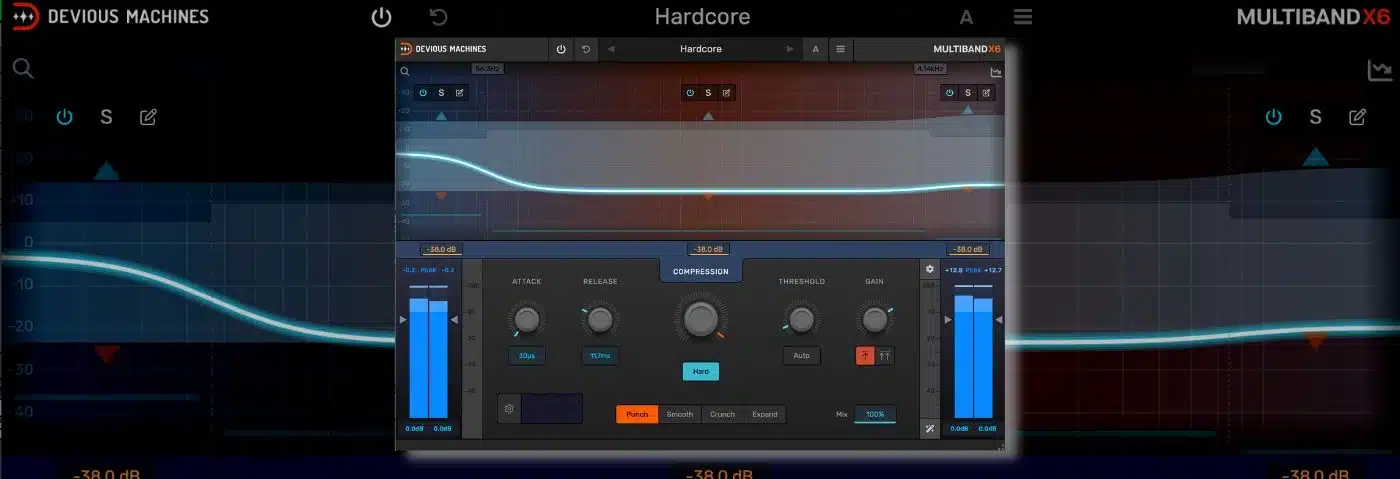
Effective use of multiband compression requires a deep understanding of how different frequency ranges interact within a mix.
Each frequency band (low, mid, and high) has its characteristics and challenges.
Navigating these successfully is key to a well-balanced and dynamic mix.
In the low end, the focus is often on managing the power and punch without it becoming muddy or boomy.
The mid-range requires careful handling to ensure clarity and presence, especially for vocals and main instruments.
In the high frequencies, the challenge is to add brightness and air without introducing harshness or sibilance.
Multiband compression allows for targeted treatment of these issues.
This helps you enhance each frequency range’s best qualities while mitigating problems.
By understanding and respecting the characteristics of each frequency band, producers can use multiband compression to create mixes that are both powerful and nuanced.
-
Mixing Vocals with Multiband Compression
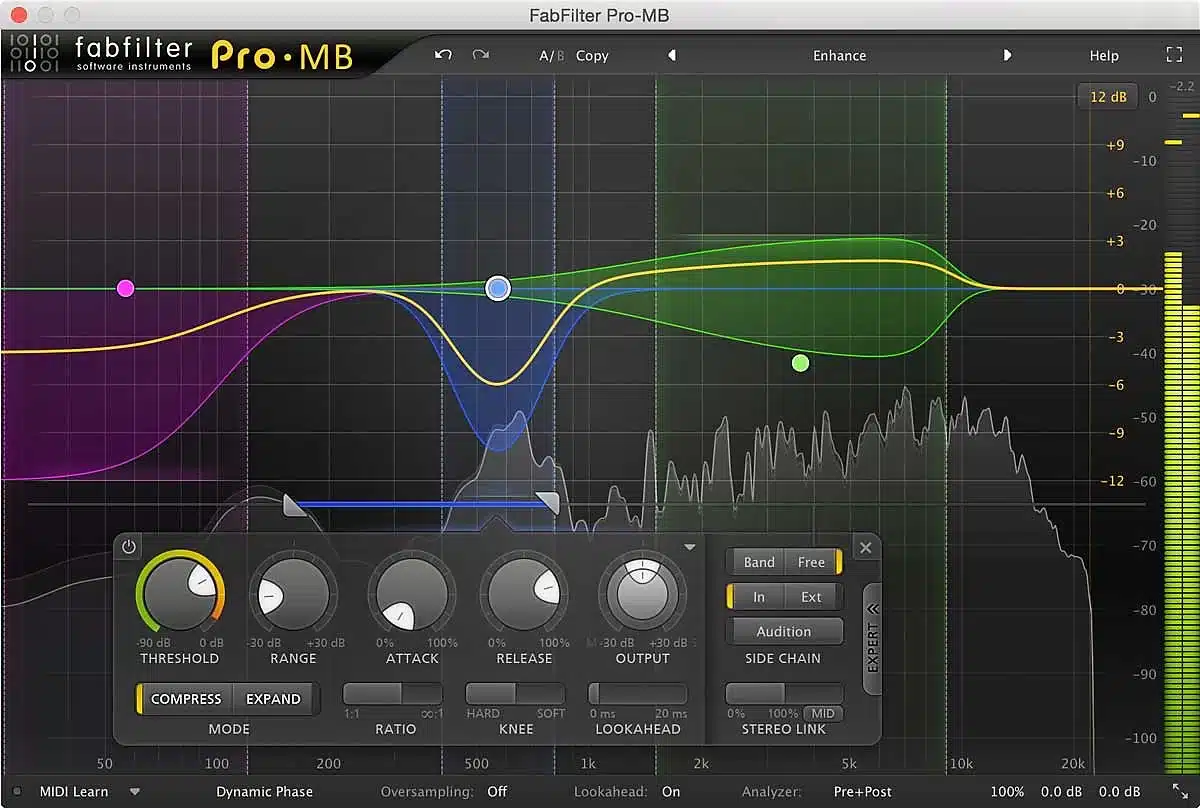
Multiband compression is particularly effective when mixing vocals, a crucial element in most beats.
Vocals often have a wide dynamic range and can vary significantly in frequency content, making them challenging to sit well in a mix.
When you use multiband compression, you can apply compression specifically to the frequency ranges where the vocals are most dynamic or problematic.
For example, compressing only the high-mid frequencies can help tame sibilance.
On the other hand, gentle downward compression in the lower mids can add warmth and body to the vocals without affecting the clarity of the higher frequencies.
The key to successful vocal compression with a multiband compressor is subtlety.
- Over-compression 一 Can suck the life and emotion from the vocals.
- Too little compression 一 May leave them inconsistent and lost in the mix.
A balanced approach, focusing on the specific needs of the vocal track, can bring out the best in the vocals.
It ensures they are clear, present, and dynamically consistent throughout the song.
The Art of Gain Reduction and Makeup Gain: Breaking it Down Further
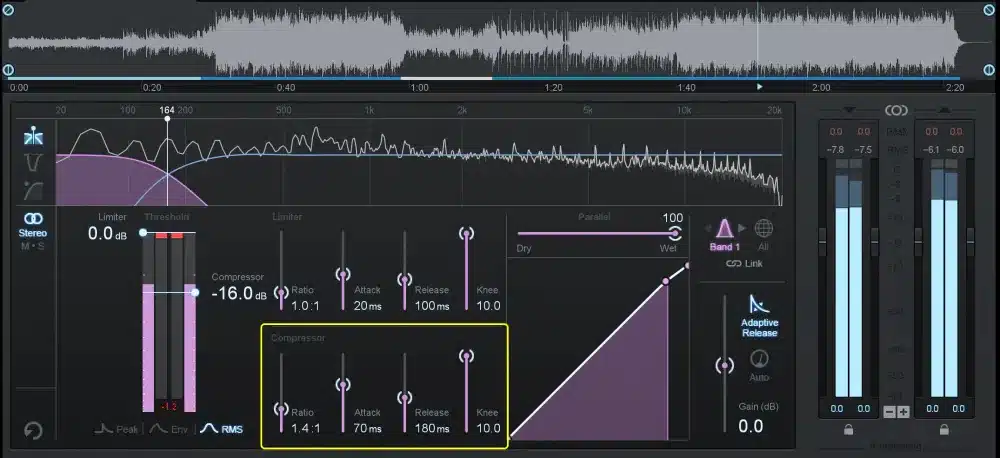
Gain reduction and makeup gain are essential concepts in multiband compression.
It occurs when the compressor reduces the level of an audio signal that exceeds the threshold.
In a multiband compressor, gain reduction can be applied differently across various frequency bands, allowing for more nuanced control.
After applying compression, makeup gain is used to bring the overall level of the processed signal back up, compensating for the volume lost due to gain reduction.
Effective use of gain reduction and makeup gain is a balancing act.
The goal is to apply enough compression to control multiband dynamics and enhance the mix without squashing the life out of it.
Makeup gain should then be used carefully to maintain a consistent level 一 ensuring that the compressed signal neither dominates nor gets lost in the overall mix.
Mastering this art is crucial in maximizing multiband compression, achieving a controlled and dynamic sound.
Fine-Tuning Compression Settings

Fine-tuning the settings of a multiband compressor is critical for achieving the desired impact on the mix.
Each parameter – threshold, ratio, attack, release, and makeup gain – plays a specific role and interacts with the others in complex ways.
As we discussed, the threshold determines when compression begins; the compression ratio dictates the degree of compression.
While attack and release times shape how the compression behaves over time.
Setting these parameters requires careful consideration of the material being compressed and the goals of the compression.
For example:
- A fast attack time 一 Is appropriate for taming transient peaks in a drum bus.
- A slower attack 一 Preserves the natural attack of a vocal performance.
Similarly, release times should be adjusted to complement the tempo and rhythm of the track, ensuring that the compression breathes naturally with the music.
Constant tweaking and listening are essential to finding the sweet spot for each setting.
-
Selecting the Right Multiband Compressor Plug ins
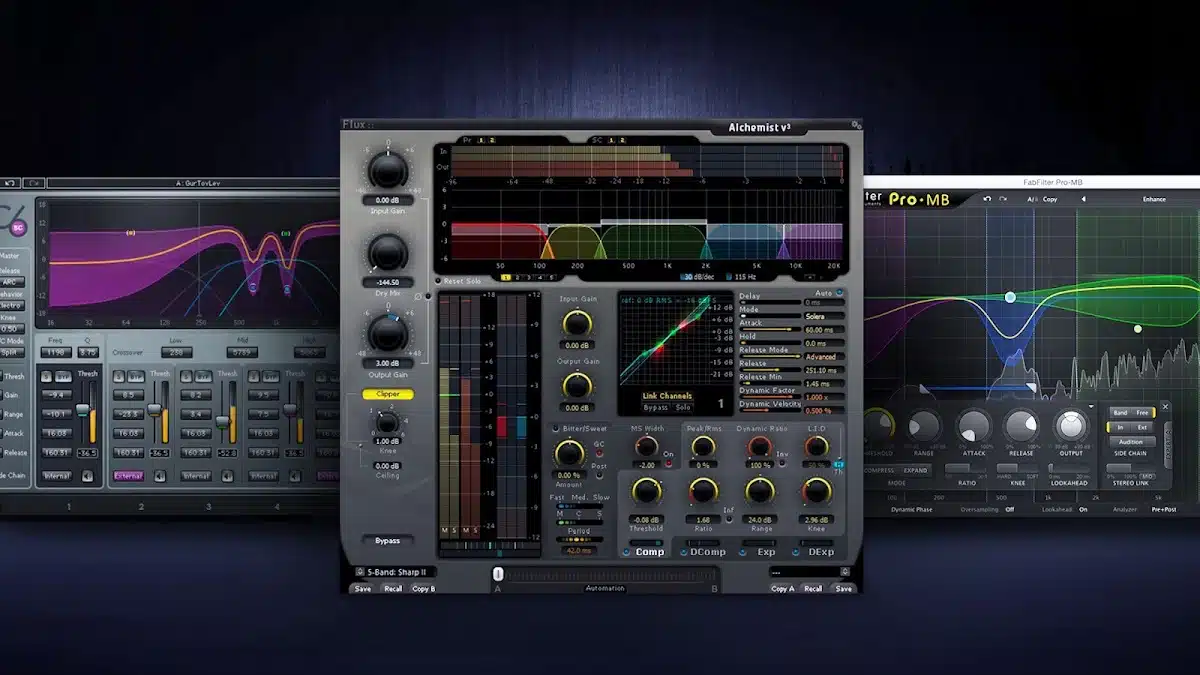
In the digital age of music production, choosing the right multiband compressor plug ins is crucial.
The market is flooded with multiband compressor plug ins offering unique features and sound characteristics.
Factors to consider when you use multiband compression plugins include the:
- Number of frequency bands
- Precision of control
- Quality of the audio processing
- User interface
Plug ins like Pro MB or Ozone Pro are famous for their flexibility and sound quality.
Your specific needs and workflow should also inform the choice of plugins.
Some plug ins are better suited for surgical, precise compression, while others excel at more general, musical compression.
The compatibility with the producer’s digital audio workstation (DAW) and the ease of integration into the existing production workflow are also important considerations.
A well-chosen multiband compressor plugin can be a powerful ally in the quest for the perfect mix and help your tracks sound nice and fluid.
If you want to check out the absolute best compressor plugins, we’ve got you covered.
Bonus: Refining Low-End Frequencies in Your Mix
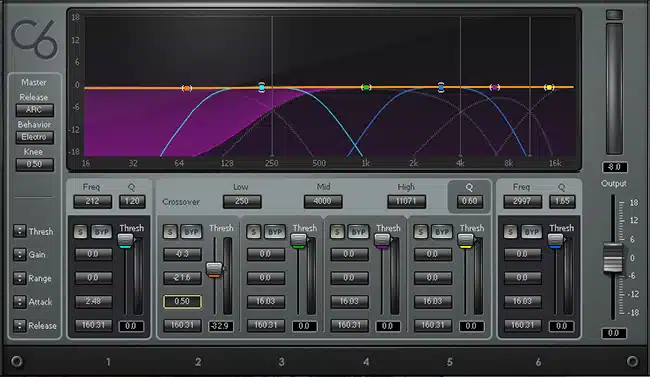
The low-end frequencies in a mix, typically encompassing bass instruments and kick drums, are critical for providing depth and power.
However, these frequencies can easily become overwhelming or muddy if not appropriately managed.
Multiband compression is a powerful tool for refining these low-end frequencies.
By isolating and compressing only the low-frequency band, you can tighten the bass and create a solid foundation for the mix without affecting the mids and highs.
When compressing the low-end, it’s essential to maintain the natural character of the bass and kick drum.
NOTE: This often means using a slower attack to preserve the initial transients and a moderate release to prevent pumping effects.
The goal is to achieve a consistent and controlled low-end that supports the rest of the mix without overpowering it.
Properly executed, multiband compression can bring clarity and punch to the low frequencies 一 making the entire mix sound more cohesive and polished.
How To Use Multiband Compression: Final Thoughts
Multiband compression, as you now know, is an indispensable tool in the realm of music production.
It can help you precisely sculpt the dynamics of each frequency range in your mix, enhancing clarity and overall balance.
Now, armed with this knowledge and the tricks you’ve learned, you’ll be able to handle complex mixing scenarios, control the dynamics of your tracks, and achieve a polished, professional sound.
Whether it’s tightening the low end, smoothing out vocals, or mastering the final product, multiband compression will be your go-to technique for crafting high-quality audio.
To further enhance your production skills, you can download the legendary Free Famous Beatmaker Template Essentials.
This resource offers the most accurate and organized structures of hit tracks in popular DAWs like Ableton, FL Studio, and Logic Pro.
With these templates, you can see and hear how perfectly compressed tracks sound 一 giving you a real-world example to aspire to in your projects.
Each template contains the structure of hit tracks, providing a solid foundation for your creativity.
You can use any sounds you want to tweak, customize, and truly make each template your own.
This hands-on experience is invaluable, allowing you to apply your newfound knowledge of multiband compression in practical settings and learn from the best in the industry.
With these tools at your disposal, you’re well on your way to creating standout tracks that resonate with audiences and showcase your unique style as a professional music producer.
Until next time…







Leave a Reply
You must belogged in to post a comment.